How to Build the Perfect Wine Cellar
However large your collection, the correct storage is a must for those who love wine – be it to drink now, or to lay down for later
However large your collection, the correct storage is a must for those who love wine – be it to drink now, or to lay down for later
We all dream of owning a fine collection of wines, with the perfect bottle for every occasion. And while, of course, assembling a “cellar” that’s the envy of all your friends will take years, there is no time like the present to start building the actual cellar in which you will keep it.
As with all aspects of home-building and interior design, trends for how and where to keep your beloved bottles have evolved over recent years. Traditionally, walk-in wine cellars were subterranean rooms, thanks to their ambient ground temperature, lack of natural light, and higher than normal humidity. While these remain in vogue, modern technology and clever design (as well as better building techniques) mean that a wine cellar, room, “pod”, or even a wall, can be installed anywhere there is space.
Here is all you need to know about creating a home for your sure-to-be-legendary wine collection.
Wine rooms
As the name indicates, these are self-contained spaces, often existing “spare” rooms, fitted out with the technology to keep wines in optimum conditions. “Generally, an enclosed room without natural light is the most cost-effective to prepare, especially for larger collections,” says Andrew Speer, director of Cellar Maison, which creates bespoke wine rooms of all shapes and sizes. A consultation with Andrew begins with a discussion about a collection: ideal capacity, and storage needs (wines for entertaining, the laying down of fine wines, investment wines, and so on).
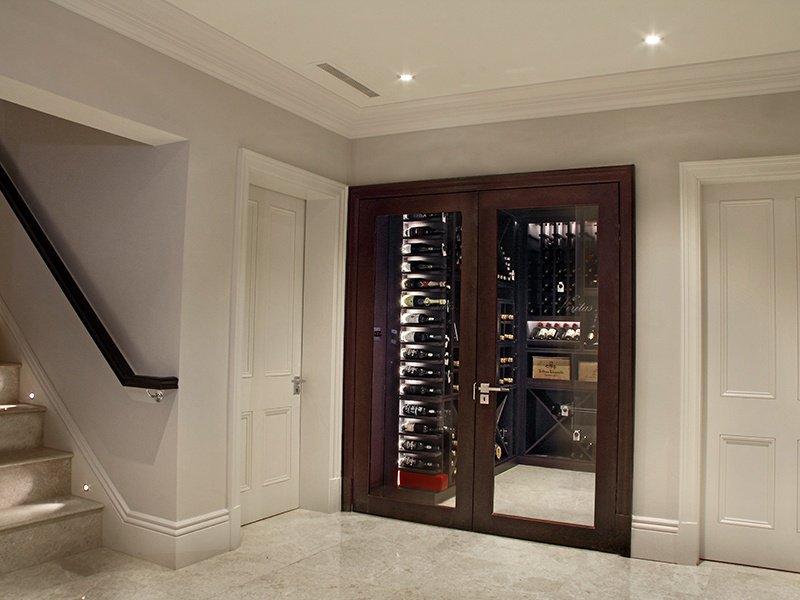
“Next, we look at the property layout and intended area where the wine room is to be positioned, to determine the preparation work required, such as any structural modification, insulation, or electrical wiring, and we advise on the most suitable climate-control system,” says Speer, who often works alongside a building contractor for this prep work. Then comes the fun bit, as Speer asks about design and style preferences—Cellar Maison’s site has a great planning tool that lets clients see all available options. After this, Speer and his team put forward their proposed designs for approval.
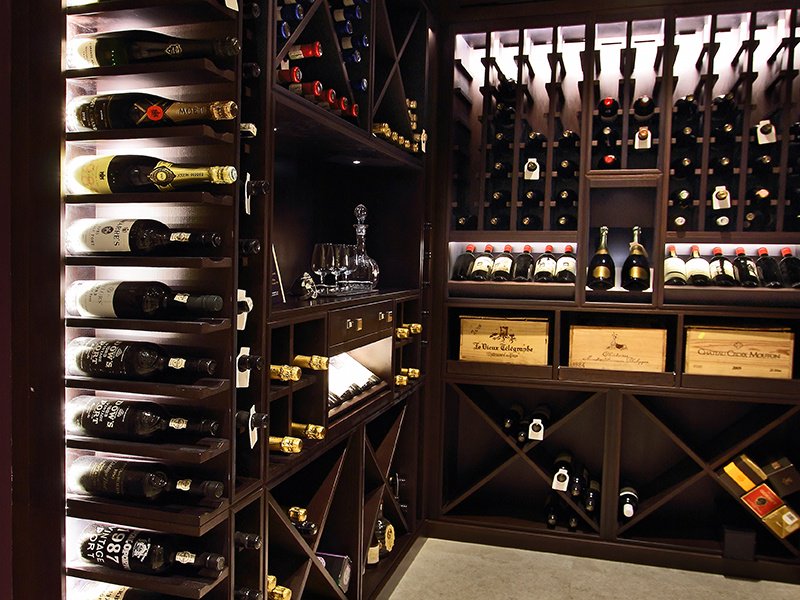
Rebecca Wakefield, creative director at London-based property development company Banda comments: “Our clients now see a well-designed wine store as a crucial addition to their home, yet not all have the capacity for a cellar. With modern technology and creative thinking, homeowners can create storage within their existing space, be it hidden behind bookshelves or underground within vaults, ensuring that the wine room is not only stunning but in keeping with the rest of the property.”
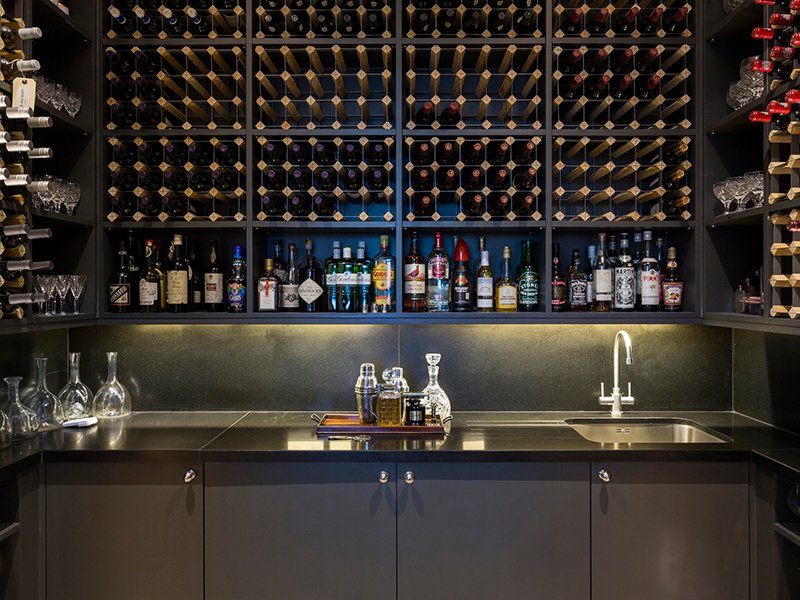
Rebecca and her team recently installed a wine room hidden behind a bookcase in a large London private residence. The stunning room of around 43 square feet can store hundreds of bottles of wine in four fridges, and has a sink and plenty of space for glassware and equipment.
“Our clients often tell us that the wine cellar becomes the focal point during parties, and as such, a popular trend is building them larger, often with a table in the middle for tastings or dinner, or using barrels to create a standing area,” says Billy Heyman, managing director of renovations firm BTL Property, which has built many bespoke cellars. “It is also becoming more and more popular to fit sinks within the cellar for glass washing. In some cases, we’ve also seen homeowners link the cellar to a property’s AV system for mood lighting and music.”
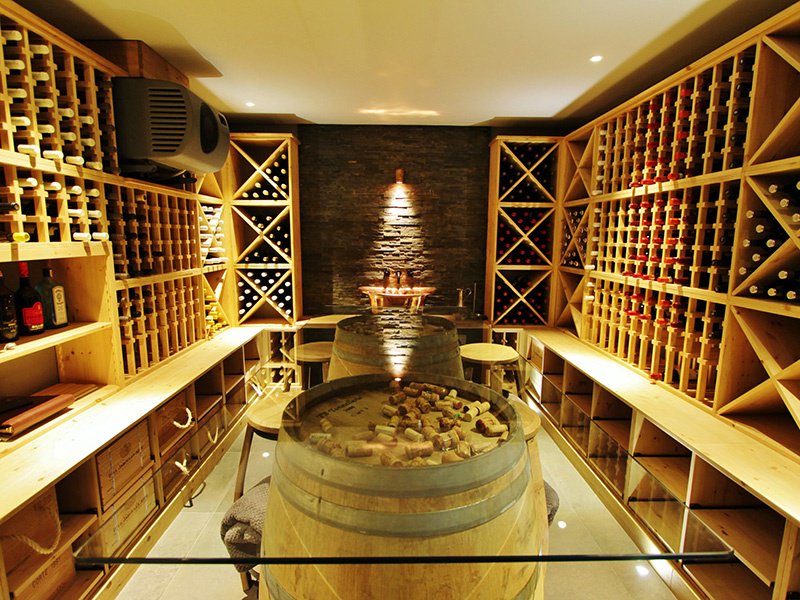
And if you are looking to convert an existing cellar or basement, take inspiration from Mario Botta, the Swiss architect behind the wine cellar of Villa René Lalique in the French Alsace. To create the room, which occupies more than 2,150 square feet beneath the Villa’s restaurant, Botta, together with Silvio Denz, chairman and CEO of Lalique, and Romain Iltis, head sommelier at Villa René Lalique, had to consider factors such as how to accommodate bottles of different shapes and sizes (Bordeaux, Alsace wines, magnums, and others) and lighting: every bottle is stowed in the dark, in a drawer or case. Hygrometry was another concern—the cellar is kept at 60% humidity, ideal for preserving bottles and labels—as was temperature: there are two storage areas—one for white wines, at 11°C (51.8°F), and the other for reds, at 15°C (59°F). The result is a showstopping, state-of-the-art storage area.
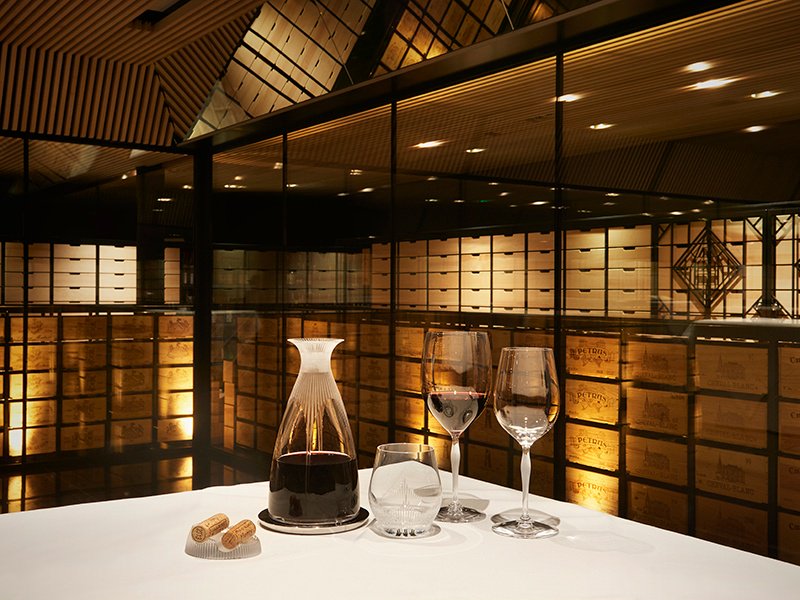
Wine walls and pods
Ideal for smaller properties and pieds-à-terre, the wine wall offers all the benefits of a cellar or room but without the need for so much space. “Wine walls are proving to be one of our most popular installations,” notes Cellar Maison’s Speer. “Over the past 18 months, wine wall orders have overtaken our wine cellars and rooms. Our wine walls can be four feet in width and up to 20 feet high, and capacity can vary from 150 to 1,000 bottles or more depending on the space available, as well as the bottle arrangement.”
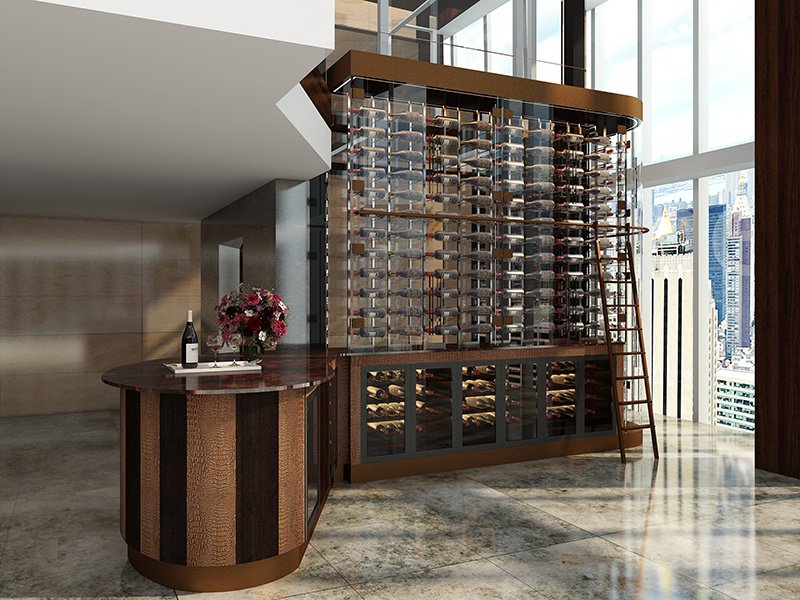
Too many bottles for a wall but not enough space for a cellar? Then consider a wine “pod”. These enclosed spaces are climate-controlled as per a room or cellar, and usually enclosed in glass. They are often incorporated into kitchens or dining spaces.

Spiral cellars
Perhaps the biggest innovation in wine storage harks back to the classic underground cellar, but in a thoroughly modern incarnation. A “spiral cellar,” as the name suggests, is a circular storage facility dug into the floor. “It can be installed under any ground-floor room and doesn’t require an existing cellar or basement,” says Lucy Hargreaves, managing director of Spiral Cellars, which has been creating cellars for more than 35 years for clients around the globe. “The advantage of a spiral cellar is that it doesn’t take up any space. In fact, a spiral cellar creates space you didn’t know you had.”
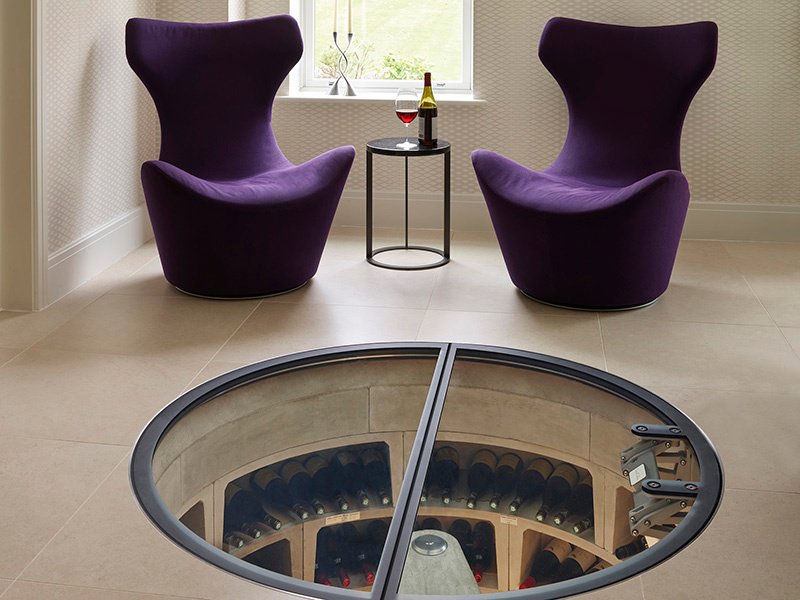
Built from engineered concrete, the rooms are capable of storing up to 1,900 bottles of wine. The solid concrete construction, built-in natural ventilation, and the correct positioning in the property create the right temperature and humidity for optimum cellaring conditions. There are a range of door and cellar options available, with the opportunity for customers to tailor their cellar with additional items such as stair treads and LED add-ons to enhance the design and make the cellar a stunning feature in the room.